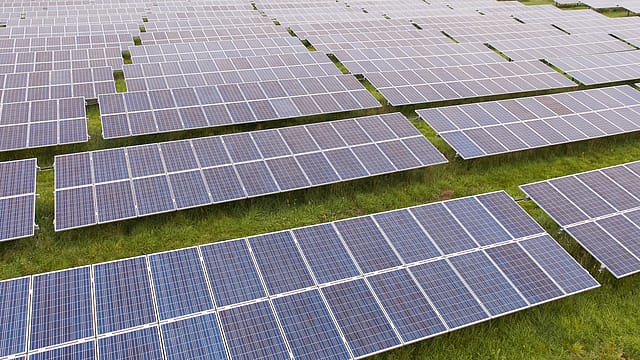PM Modi announces rooftop solar scheme for 1 cr households
ADVERTISEMENT

Prime Minister Narendra Modi has unveiled the ‘Pradhan Mantri Suryodaya Yojana’, a scheme that seeks to harness the solar energy from the sun to generate electricity for over 1 crore households. PM Modi, after the consecration ceremony of the Ram temple, said every Indian household must embrace their own solar rooftop system.
Taking to the X platform (formerly known as Twitter), Modi said, “Today, on the auspicious occasion of consecration in Ayodhya, my resolution got further strengthened that the people of India should have their own solar rooftop system on the roof of their houses.”
Announcing the scheme, the PM says: “The first decision I have taken after returning from Ayodhya is that our government will launch “Pradhanmantri Suryodaya Yojana” with the target of installing rooftop solar on 1 crore houses."
Modi asserts the initiative will not just alleviate the financial burden of electricity bills for the less privileged and middle class but will also propel India towards self-reliance in the energy sector.
In the earlier part of the day, the prime minister led the 'pran pratishtha' ceremony for the Ram temple in Ayodhya. A huge assemblage of over 7,000 guests, encompassing luminaries from the realms of cinema, sports, spirituality, industry, and music, graced the occasion.
December 2025
The annual Fortune 500 India list, the definitive compendium of corporate performance, is out. This year, the cumulative revenue of the Fortune 500 India companies has breached $2 trillion for the first time. Plus, find out which are the Best B-schools in India.
In mid December, it was reported that the year 2024 is poised to initiate a dynamic momentum to accelerate India's ambitious goal of surpassing 500 gigawatts (GW) in renewable energy capacity by 2030. The current fiscal year has witnessed a surge in project tendering activities, with over 16 gigawatts (GW) of renewable energy (RE) projects already tendered and an additional 17 GW in the pipeline through central nodal agencies. Notably, India achieved a modest addition of 15 GW in solar capacity during FY23, and projections indicate a substantial increase to approximately 20 GW in the fiscal year 2024.
Moreover, the revitalised momentum in project execution and bidding can be largely attributed to a significant plunge in prices of solar cells and modules. Vikram V, Vice President & Sector Head - Corporate Ratings at ICRA, notes, "The sharp decline in solar PV cell and module prices by 65% and 50%, respectively, over the past 12 months is leading to a healthy improvement in debt coverage metrics for upcoming solar power projects."
The consistent decrease in solar module prices since October 2022 is anticipated to elevate the internal rate of return (IRR) for the 45 GW utility-scale solar project pipeline awarded since fiscal 2021. This surge in IRR is poised to propel the implementation of solar capacity to its swiftest annual pace of 16 GW in the current fiscal year, as affirmed by the rating agency CRISIL.
